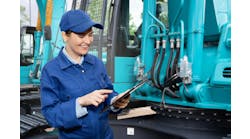Digitalization changing how products come to life
The train comprises the digitalization of processes, as well as reality, and it continues to gain momentum and increase speed with each passing month. From mobile-device applications,
such as Pokémon Go, to manufacturing and assembly, the potential of digitized activities is limitless.
“Have you seen the Bulbasaur?” Ludwig asked the crowd of keynote attendees at the Smart Industry 2016 conference in Chicago. He was referring to the Pokémon monster, standing in the middle of the room but visible only to individuals with the app that could “see” it on their mobile devices. “Augmented reality is coming,” Ludwig said, “but what does it mean for customers and suppliers?”
“In the automotive industry, what’s happening is fascinating,” said Ludwig. “It’s not just that they’ve significantly improved their processes. When you walk in an automotive factory, it’s completely different than it was 10 years ago. They now define themselves as mobility companies. They believe there’s an opportunity for autonomous mobility.”
Augmented reality is just a small car on the train, and digitalization is just a section. Three elements—digitalization; smart products and production; and insight from data—are barreling down the tracks, and companies will need to decide quickly whether to get onboard, be left behind or run over.
“What does it mean for a company?” asked Ludwig. “We all have simulations, but how are they put together? Digitalization is changing the way products come to life. With generative design, we’re able to look at hundreds of options, instead of just a few. It’s changing the way products are realized through machine learning, additive manufacturing and advanced robotics. And it’s changing the way products evolve through cloud technology, knowledge automation and big-data analytics.”
From ideation to utilization
“You need to think digitally across the entire value chain,” suggested Ludwig. “We create a lot of intelligence that can be used in product design for ideation, in production planning and production engineering for realization and in production execution and service for utilization. Information in real time is of enormous value to companies. But how do you integrate all of this—big data and production engineering and design?”
For example, Italian automobile maker Maserati has proven high quality and maximum efficiency can be combined in its luxury sports sedan, the Maserati Ghibli. “From design to execution planning, everything is done digitally,” explained Ludwig. “It used to take Maserati 30 months from start to end, but the Ghibli took only 16 months because of digitalization.” It yielded a threefold manufacturing productivity increase, tripling the volume of the car.
“We have all of these islands of test data and simulation data and customer-usage data and historical data,” explained Ludwig. “If you are able to put all of the information in one place, you are able to dial the clock forward. Right now, we are looking at how to integrate all of these. For example, one customer of ours was able to integrate additive manufacturing into the design process and produce a tractor component with less materials and more efficiently.”
And, at Dell, it used to take them weeks to analyze data. Now, with the right tools, it only takes hours, said Ludwig. “The key is identifying the digitalization tipping point for your business. Today, we need to integrate across ideation, realization and utilization.”
Another other example Ludwig cited is Local Motors, a Phoenix-based automotive company that uses open-source designs and multiple manufacturing facilities. “Local Motors has 50,000 contributors sending in their ideas,” he explained. “The CEO then finds places to 3D-print the car near the customer. Partnering with Local Motors means combining elements of the digital machine shop and smart manufacturing into micro-factories of the future.”




